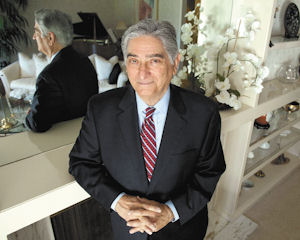What’s the secret to Myer Sankary’s mediation business? Manipulation. Sankary, one of the Valley’s best known and well-respected mediators, rattled off his list of psychological tools that help him move warring parties to a resolution. “We do manipulate people,” Sankary said, lounging in his Studio City home. “But the question is: Are we doing it for an ethical reason? Because the same principles are used by the con artist.” A litigator and transactional attorney for more than 40 years, the father of two is now a full-time mediator. He handles a range of cases including probate, business, personal injury, real estate, and those involving elder and cross-cultural issues. He also serves on the Los Angeles Superior Court’s Alternative Dispute Resolution Committee and is a former president of the Southern California Mediation Association. Sankary says he uses a range of tactics to encourage parties to reach a resolution. Establishing shared experiences so parties like and trust him is one approach. Using favors or concessions to bring the parties together is another. Once, Sankary said he told Vietnamese Buddhist nuns that his first name means “the enlightened one” in Hebrew. The Buddhists stood up and bowed. The 72-year-old said his life experiences have helped him better connect with parties and become a better mediator. Born to Jewish immigrants, one Syrian and one Polish, Sankary grew up working at his family’s market in segregated Fort Worth, Texas. He served customers of all backgrounds who were often discriminated against in town — a key learning experience, he says. As a young adult, Sankary traveled to the newly created state of Israel straight out of high school in 1957 to “build it up.” Upon returning to the United States, the youngest of 10 children attended Texas Christian University and Harvard Law School. What followed was a long career practicing family and personal injury law. Another trip to Israel, in 1996, pushed Sankary to jump headfirst into mediation. Sankary — who had worked with the Oasis of Peace village, a village in Israel dedicated to coexistence between Arabs and Jews — traveled with a dispute resolution group from Pepperdine University’s School of Law to teach Jewish Israelis and West Bank Palestinians Western mediation techniques to resolve conflict peacefully. During the trip, Sankary and two Pepperdine colleagues stepped into the latest clash between the two sides. As Israeli police and a group of Muslim clerics were about to skirmish on a Jerusalem street, Sankary said one of his colleagues turned to the other and asked whether the two sides could use their mediation services. “That kind of struck me (if) it is possible to mediate real conflict,” he said. “So I got interested from that time.” But building up a mediation practice wasn’t easy. Sankary said he started performing pro-bono work through the Los Angeles Superior Court to build his reputation and gain needed experience. Through the years, Sankary said he’s noticed judges become increasingly friendly with lawyers in hopes that attorneys will hire them when they decide to jump into semi-retirement as an arbitrator or mediator. Since the 1990s, the number of mediators in Los Angeles has grown from the hundreds to easily more than 5,000, he said. Today, Sankary has plenty of business, mostly from lawyers who are looking to settle cases in the midst of litigation and who are willing to pay his standard $400 hourly rate. For the past several years, he’s handled roughly 60 to 70 cases a year, he said. Just recently, he convinced two former friends to settle a decade-long dispute over a loan worth hundreds of thousands of dollars. It took one eight-hour session, he said, for which they paid $3,200. Sankary said if the two parties continued to battle it out in court, it could have cost each about $50,000. “Did I manipulate them?” he asked. “For an ethically good reason.”
